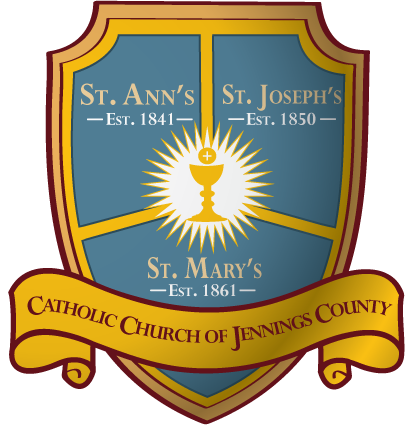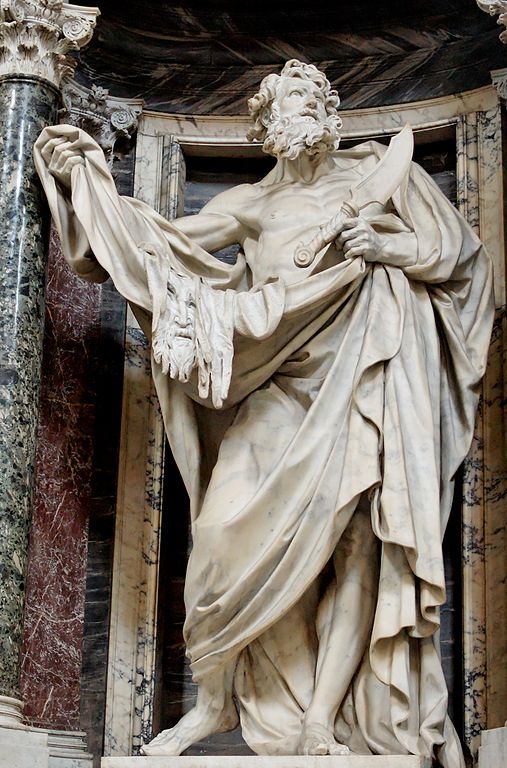I didn’t know a lot about St. Bartholomew, one of the 12 Apostles, until a trip to Rome.
When I gazed at the Sistine Chapel’s ceiling, studying Michelangelo’s The Last Judgement, I was startled to see the depiction of a man holding his skin in one hand and a large knife in the other. It made quite an impression. One does not forget such artwork!
There’s a similar depiction of St. Bartholomew at the Archbasilica of St. John Lateran. An imposing statue shows a muscled man with marble ringlets of hair holding a knife and his skin in his hands. His face is deflated –like a balloon mask whose air was let out of it– and you get the sense that he’s been flayed. You get a better clue that he’s an apostle because there are 11 other statues depicting apostles.
These colossal statues line a fabulously beautiful tiled floor hallway– it’s really a nave – leading you into the basilica. Just keep looking up because the ceiling is a work of art too. The apostles are all shown with the object associated with their martyrdom.
Who Was St. Bartholomew?
St. Bartholomew is mentioned in three of the four gospels, and Acts. He is always accompanied by St. Philip. There’s some confusion because he’s also called Nathanael in John’s gospel when Christ calls out: ‘Behold, an Israelite indeed, in whom is no guile!’ (John 1:47).
Jesus found no deceit or dishonesty in St. Bartholomew. It means this saint did everything above board echoing Psalm 32:2.
“Blessed is the man to whom the Lord imputes no guilt, in whose spirit is no deceit (guile).”
We celebrate St. Bartholomew’s feast day on August 24. He preached in India and Armenia. In Armenia, we start to understand why we get some of the most spectacular visual representations of St. Bartholomew’s death.
Traditional hagiography – that’s a fancy word meaning holy biography –states the Armenians got mad at St. Bartholomew because he converted the king of Armenia to Christianity. The king’s brother flew into a rage and the result was one of the most vicious and barbarous martyrdoms we’ve seen. St. Bartholomew was also supposedly beheaded after his skin was cut off in strips from his body. He was skinned alive. I guess the old colloquial sayings, “I’m going to skin you alive,” or “I’m going to skin you within an inch of your life” when someone gets in deep trouble, comes from St. Bartholomew’s story.
How Great it is to be Catholic
Catholics have a sense of humor– odd or not – when assigning patron saints to professions. For example, St. Lawrence was tortured on a gridiron held over hot coals. He supposedly told his torturers to turn him over because one side of him was done. It earned him the title of patron saint of cooks and comedians!
It’s no wonder that St. Bartholomew is the patron saint of various professions that skin animals, or use animal skins, like leatherworkers, trappers, tanners, bookbinders, farmers, and shoemakers.
Artwork of St. Bartholomew
While there are hundreds of artworks depicting St. Bartholomew, it seems his martyrdom captures the artistic imagination with some of the most famous works.
You can view St. Bartholomew Flayed, in the Duomo in Milan, Italy. Here is an artistic expression of anatomy that shows all the tendons and veins of the saint, in marble, while he also holds his own skin.
If you want more tame artwork, but still beautiful representations of St. Bartholomew check out this iconography site.
To find out what other saints we celebrate this week, get our snapshot calendar here!



